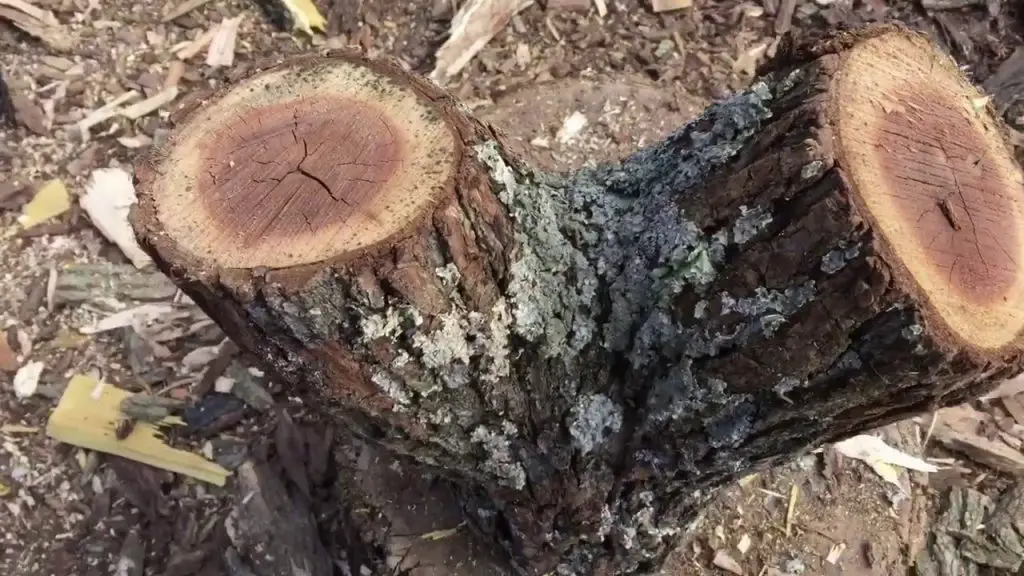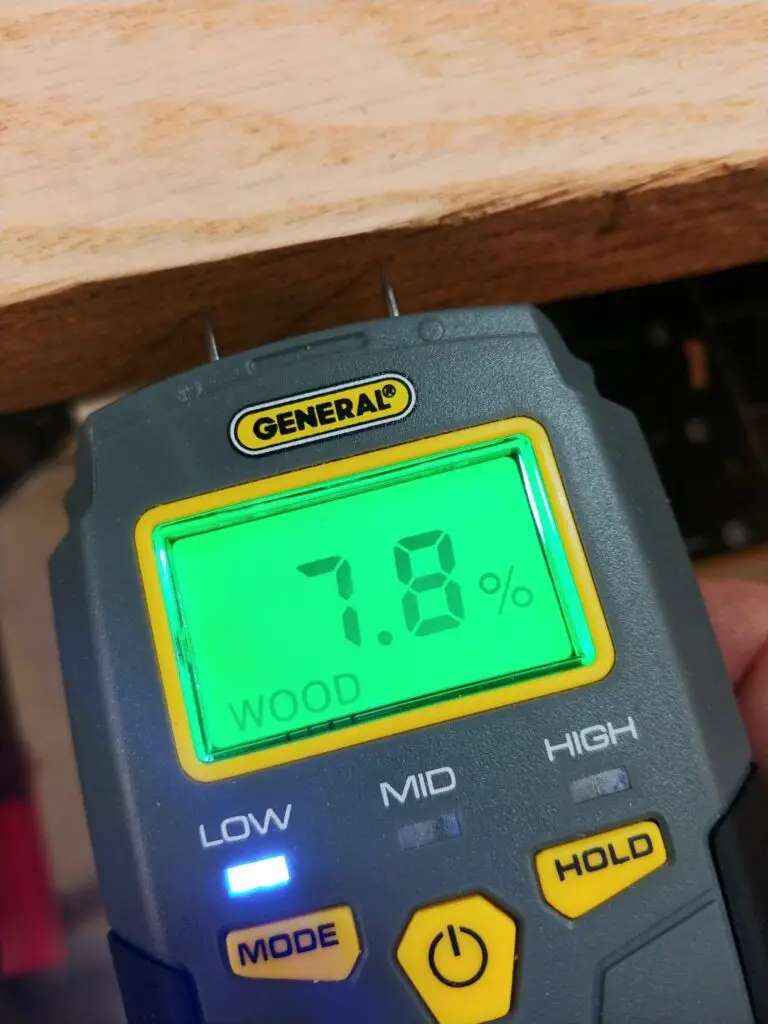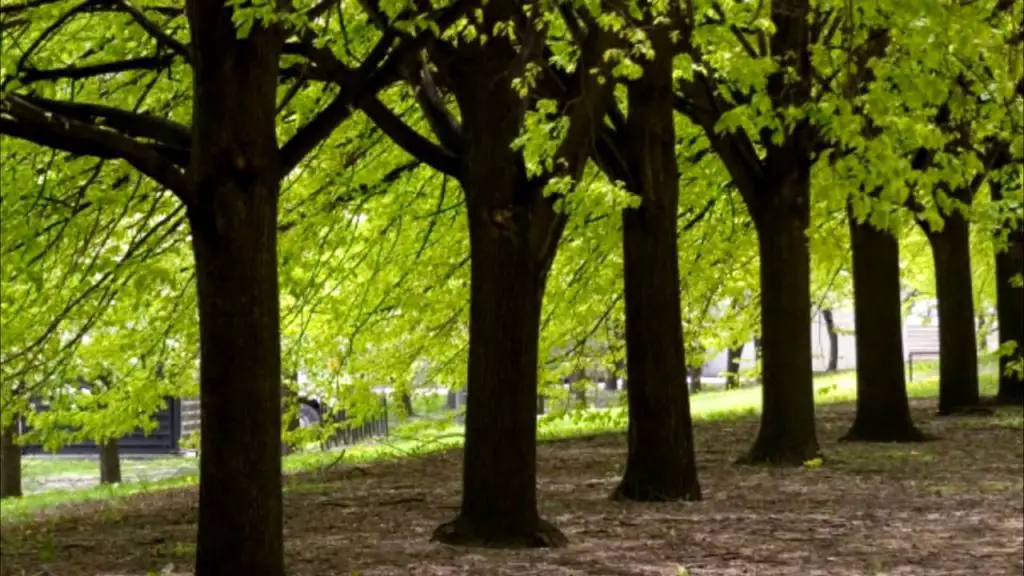Elm is fair firewood that produces moderate heat, has a poor smell and is very hard to split.
Elm is a reasonably popular tree that can be found all throughout the Northern hemisphere. It is common to see elm trees line streets and paths since they create a very appealing tunnel effect.
However, elm trees have been victim to Dutch Elm Disease, or DED, which is a fungus spread by the elm-bark beetle. Because of DED, there are millions of standing dead elm trees.
Because of all of these dead standing trees and their overabundance, you might be looking at one and asking, does elm make good firewood?
Many agree that elm is fair firewood, but it won’t make the top of anyone’s list for best firewood.
Table of Contents
Summary
- BTU: 20 million BTUs per cord
- Weight: 2872 lbs per dry cord
- Seasoning Time: 12-24 months
- Splitting: Difficult
- Smoke: Medium
- Sparks: Few
- Smell: Intense, somewhat bad
The American Elm is found in North America and most commonly found for firewood. However, Red Elm and Siberian Elm are also popular firewood.
Today’s numbers are for the American elm, but all elm trees are similar in statistics and heat production.

Heat Production
Elm produces a medium amount of heat compared to other hardwoods, producing at 20 million BTUs per cord.
A cord of firewood is 128 cubic feet, cut into 16-inch lengths, and stacked into three 4×8 rows.
While elmwood does not create the hottest fires, it does hold a nice flame and makes excellent coals.
Having a great producer of coals may be a winning factor for some people who expect their wood stoves to stay hot all through the night or workday.
Smoke Production
Elm firewood is moderately smokey, even when fully seasoned.
Elmwood is exceptionally dense, which means it holds a lot of water. This extra water stored in the fibrous grain creates extra smoke. The longer you season elm, the less smokey it will be.
Never burn elmwood green. You will have a miserable, smokey fire that you may never actually catch.
Elm firewood does not create a lot of sparks, which is nice if you are planning on burning elm inside.
While you should always use a screen or glass doors when burning inside, firewood that produces a low amount of sparks is safer. Wood that sparks heavily can create significant fire hazards.
Seasoning Time
Seasoned wood has a moisture content of less than 20 percent. Firewood with a higher moisture content than 20 percent is harder to light and frustrating to burn. It also produces more smoke and creosotes buildup.
Often, you can find standing dead elm trees that are nearly dry, which is good news if you’re looking to use elm as firewood. This wood may only require 6 months to a year to season.
However, if you are seasoning green elm, expect to wait at minimum a year, but maybe two.
Remember, seasoning time depends on where you live, what climate your wood is exposed to, and how you stack your wood. Wood will season quicker in dryer climates.
Even though elmwood is fairly resistant to rot and disease (other than DED), try to keep your wood off the ground as much as possible. Airflow around your entire log pile will help speed up seasoning time.
I personally recommend this General Tools Moisture Meter. It allows you to accurately gauge how wet your firewood is and whether it is sufficiently seasoned. Over time you can also see how quickly the moisture is dropping and how much longer you need to keep your firewood dropping until it is seasoned and ready to burn.
Press the sharp pins into the wood and you will quickly see the readout show the moisture ranging from 5% to 50%. It also has a Low/Mid/High indication depending on whether the wood is dry enough, so you don’t need to remember the actual values.

Burning Smell
A large disadvantage to burning elm is that it is kind of stinky or swampy smelling.
Elmwood often smells bad because it has beetles living in it and is disease-ridden. Healthier elmwood will smell better when burned.
Elmwood also holds a lot of water in its dense wood. Trees that hold a lot of water absorb the smell of what’s growing around it. So if an elm tree is growing near flowers, it will have a more pleasant smell compared to an elm tree that has grown by a septic field or swamp.
Consider both of these things before burning your elmwood. Ask yourself, was this a healthy tree? And where did it come from?
These questions and fully seasoning your wood before burning will help you save yourself from stinking up your entire house.
Creosote Buildup
Creosote is a dark brown tar deposited from wood smoke that can build up on the insides of your chimney walls. It contains tiny unburned particles of wood and sap found in smoke. Creosote can be extremely dangerous because of how flammable creosote is and will quickly start a chimney fire. Firewood with higher levels of sap will create more creosote.
Because elm is an extremely dense hardwood, it has a low sap and resin content.
That’s really great news because you won’t have to deal with stinkiness or much creosote buildup when handling elm firewood.
At least this is one thing that is nice and easy about elm firewood!
Splitting
Splitting elm is the biggest complaint of elm firewood. It is an absolute headache to split with a maul.
Elmwood is very stringy, so the strings will hold the wood together even after you’ve cracked the wood apart with a maul.
Even with an axe, these stringy fibers can still get in your way of a clean split.
A hydraulic wood splitter is really the only way to split elm firewood.
If you don’t have this option and can only split by hand, work around the edges with a sharp splitting axe.
Split off to the side for your first swing and continue around the center as such. You will be left with a square center piece. If you would like to attempt to split that to keep a square shape, you may. Or, with much less work, you can split off the sides if they aren’t knotty.
An old wives tale says that the harder the elmwood is to split, the hotter it burns.
Different Types/Species
Elm trees are members of the Ulmus genus in the Ulmaceae family. There are 30-40 species of elm trees, most of which have been used for landscaping historically.
There are three species of elm trees that are most popular for firewood: the American Elm (most common), Red Elm (favorited), and Siberian Elm.
American Elm
Also called White Elm, American Elm is an extremely hardy tree that grows quickly. It has a natural resistance to wind and harsh weather conditions. While American Elm creates the best coals of the different species, it is the hardest to split. It can easily be found in Massachusetts and North Dakota, lining suburban streets.
Red Elm
Red Elm trees are considered invasive because they grow fast and aggressively. Red Elm, while it is the second most popular firewood, is the favorite among the three. Red elmwood is less dense, making it easier to split and creating long-lasting fires. It also has the highest heat production of the three, with 21.6 million BTUs per cord.
Siberian Elm
Siberian Elm’s wood and grain quality is on par with Red Elm and is often chosen over American Elm if there is an option. However, there often is not an option since Siberian elm is native to Eastern Siberia, Korea, Tibet, India, Mongolia, and Northern China. It is easier to split than American Elm and produces more heat at 20.9 million BTUs per cord. Siberian elm does well in harsh conditions with full sun and nutrient-poor soil. It is often planted outside of its native areas because it is resistant to Dutch elm disease.
Elm trees can be identified by their serrated-edge leaves that grow in a “left-right-left” pattern, also called alternate-simple. The bottom of elm tree leaves are fuzzy, like a peach.
Samaras, or the seeds of elm trees, are similar looking to the familiar ‘helicopters’ of maple trees, except they are circular or oval.
All elm trees are strong, durable, and resistant to harsh weather conditions, rot, water, and strong winds. Because of this, elm trees have been used to make ship keels, piers, archery bows, and furniture such as chairs.
Other elm tree species to note:
- Camperdown Elm, found in the United Kingdom
- Cedar Elm, found in Southern North America, especially Texas
- Cherry-Bark Elm, found in Eastern Asia and the Himalayas
- Chinese Elm, found in China, Japan, North Korea, and Vietnam
- David Elm, found in China, Japan, Korea, Mongolia, Siberia
- English Elm, found in Western and Southern Europe and Britain
- European White Elm, found in central and southeast Europe and Caucasus
- Slippery Elm, found in Central and Southern U.S.

Comparison to Other Woods
Here, I’ve taken some of the most popular firewoods to burn indoors and compared them to Elm firewood using Utah State University’s findings on Wood Heating
| Firewood | BTUs | Ease of Splitting | Coals | Overall Quality |
| Green Ash | 20.0 | Easy | Good | Excellent |
| Maple | 25.5 | Easy | Excellent | Excellent |
| Bur Oak | 26.2 | Easy | Good | Excellent |
| Elm, American | 20.0 | Difficult | Excellent | Fair |
Clearly, elm produces much less heat compared to Maple and Oak but does well when comparing coal production. However, elm will not score higher than fair overall because of its bad smell and difficulty to split.
Identifying elm firewood compared to other woods is fairly easy because it has a distinct characteristic.
Elmwood has wavy annual rings – the circles you count to tell the age of a tree are wavy.
FAQs
Can you burn elm in a fire pit?
Yes, elm can be burned in a fire pit. It may be a good idea to burn your first few logs of elm outdoors to get an idea of how smokey it will be and what it will smell like. Then, you can judge based on that if you would like to burn it inside.
Is elm firewood safe to burn in a fireplace or wood stove?
Yes, elm is safe to burn in a fireplace or wood stove. Some like to burn elm because it is a great coal producer.
How much does elm cost to buy?
Elm is not typically sold as a firewood, especially not by itself. Elm is typically found as a standing dead tree or an already fallen tree. Elm can often be found easily for free, depending on where you live.
Final Thoughts
While not a favorite among the firewood world, elm does have some redeeming qualities. Elm produces a fair amount of heat, has very few sparks, and creates great coals.
If your elmwood is seasoned very well and has little to no smell to it, it can be very lovely to burn elm throughout the cold season.
When it comes to splitting, elm is going to give you difficulty, but it’s always said that splitting wood will heat you twice – so go ahead and get your extra workout in.
Overall, that elmwood you’re looking at will do you okay and get the job done if need be.
